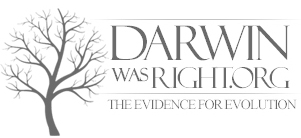On the Origin of Species, published on 24 November 1859, is a work of scientific literature by Charles Darwin which is considered to be the foundation of evolutionary biology. Its full title was On the Origin of Species by Means of Natural Selection, or the Preservation of Favoured Races in the Struggle for Life. For the sixth edition of 1872, the short title was changed to The Origin of Species. Darwin’s book introduced the scientific theory that populations evolve over the course of generations through a process of natural selection. It presented a body of evidence that the diversity of life arose by common descent through a branching pattern of evolution. Darwin included evidence that he had gathered on the Beagle expedition in the 1830s and his subsequent findings from research, correspondence, and experimentation.
Various evolutionary ideas had already been proposed to explain new findings in biology. There was growing support for such ideas among dissident anatomists and the general public, but during the first half of the 19th century the English scientific establishment was closely tied to the Church of England, while science was part of natural theology. Ideas about the transmutation of species were controversial as they conflicted with the beliefs that species were unchanging parts of a designed hierarchy and that humans were unique, unrelated to other animals. The political and theological implications were intensely debated, but transmutation was not accepted by the scientific mainstream.
The book was written for non-specialist readers and attracted widespread interest upon its publication. As Darwin was an eminent scientist, his findings were taken seriously and the evidence he presented generated scientific, philosophical, and religious discussion. The debate over the book contributed to the campaign by T.H. Huxley and his fellow members of the X Club to secularise science by promoting scientific naturalism. Within two decades there was widespread scientific agreement that evolution, with a branching pattern of common descent, had occurred, but scientists were slow to give natural selection the significance that Darwin thought appropriate. During the “eclipse of Darwinism” from the 1880s to the 1930s, various other mechanisms of evolution were given more credit. With the development of the modern evolutionary synthesis in the 1930s and 1940s, Darwin’s concept of evolutionary adaptation through natural selection became central to modern evolutionary theory, now the unifying concept of the life sciences.
Literature.org – click on link to select a chapter
- Preface
- Introduction
- Chapter 1 – Variation Under Domestication
- Chapter 2 – Variation Under Nature
- Chapter 3 – Struggle for Existence
- Chapter 4 – Natural Selection
- Chapter 5 – Laws of Variation
- Chapter 6 – Difficulties on Theory
- Chapter 7 – Instinct
- Chapter 8 – Hybridism
- Chapter 9 – On the Imperfection of the Geological Record
- Chapter 10 – On The Geological Succession of Organic Beings
- Chapter 11 – Geographical Distribution
- Chapter 12 – Geographical Distribution continued
- Chapter 13 – Mutual Affinities of Organic Beings: Morphology: Embryology: Rudimentary Organs
- Chapter 14 – Recapitulation and Conclusion
- Glossary
Free eBook download:
Darwin, Charles Robert. The Origin of Species. Vol. XI. The Harvard Classics. New York: P.F. Collier & Son, 1909–14; Bartleby.com, 2001.
Aristotle, Physics, translated by Hardie, R. P. and Gayle, R. K. and hosted by MIT’s Internet Classics Archive, retrieved 2009-04-23
Richard Dawkins (8 February 2003). “An early flowering of genetics , Books”. The Guardian. UK. Retrieved 2010-10-24
Larson 2004, pp. 66–70; Darwin’s Notebook D: Transmutation of species. pp. 134–135, retrieved 2009-04-08
Wallace, Alfred R. (1855), “On the law which has regulated the introduction of new species”, Annals and Magazine of Natural History, including Zoology, Botany, and Geology 16: 184–196
Herbert 1980, pp. 7–10. van Wyhe 2008, p. 44; Darwin’s Notebook B: Transmutation of species. pp. 1–13, 26, 36, 74, retrieved 2009-03-16
Darwin’s Notebook E: Transmutation of species. p. 75, retrieved 2009-03-14
